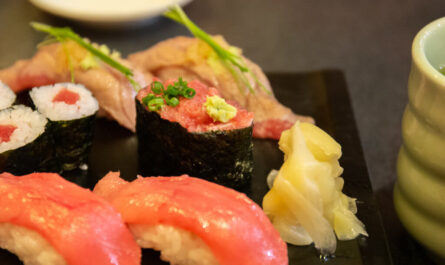Cooking rice is a fundamental skill in the culinary world, but when it comes to achieving that perfect texture with the least fuss, knowing how to cook rice in a pressure cooker is invaluable. Rice, being a staple grain, serves as the foundation for a variety of delectable dishes ranging from savory sushi to comforting rice puddings. However, for those who are still intimidated by pressure cookers, this step-by-step guide will demystify the process, ensuring your rice turns out perfectly every time. As many cooks will confirm, mastering pressure-cooked rice is not only a time-saver but also a sure way to enhance your culinary skills.

The Magic of Pressure Cooking
Pressure cooking is a culinary technique that leverages steam pressure to significantly speed up the cooking process. This method encapsulates a meal’s flavors while requiring a fraction of the energy needed for traditional cooking methods. Specifically, a pressure cooker uses a sealed pot with a valve to control steam pressure inside, transforming soups, proteins, and grains, into tender, delicious meals in record time. When properly understood and utilized, a pressure cooker becomes an indispensable tool in the kitchen. Given rices tendency to require precise timings and water measurements, the precision afforded by pressure cooking makes it an optimal method for enthusiasts and newcomers alike.
Essential Tools and Ingredients
- 1 cup of high-quality white or brown rice
- 1 1/4 cups of water
- 1 tablespoon of olive oil or butter
- 1/2 teaspoon of salt (optional)
For best results, youll need a reliable pressure cooker , readily available in various models and sizes. Additionally, make sure your knife and cutting board are on hand for prepping any accompanying sides or garnishes. These indispensable tools facilitate not only the prep work but also support in maintaining a safe, organized kitchen environment.
Preparation Steps
Rinse Your Rice
Rinsing rice is a crucial step in the preparation process as it removes excess starch. For most rice varieties, particularly sticky ones like sushi rice, rinsing in cool water until the water runs clear is essential. This step helps eliminate clumping, ensuring each grain remains separate, which is particularly desirable for a flawless rice dish.
Measure and Add Ingredients
Add one cup of rinsed rice directly into the pressure cooker. For those aiming to blend your dishs flavors with a more cohesive base, consider using chicken stock or coconut milk as a substitute. This small alteration can transform your rice from a mere side to a scene-stealer on the plate. Next, add olive oil or butter to prevent sticking and enhance flavor while accentuating the rich, aromatic qualities of the finished product.
Setting the Pressure Cooker
Once all ingredients are inside, seal your pressure cooker. For most household models, set the pressure to high. The goal here is to rapidly bring your water to a boil while trapping steam, enhancing the absorption rate of the grains. The key to perfectly cooked rice lies in maintaining both the appropriate pressure level and the cooking duration.
Cooking and Releasing Pressure
Cooking times will vary slightly depending on the rice type, with white rice often requiring roughly 3 to 8 minutes at high pressure, while brown rice can take up to 20 minutes. After your timer goes off, allow the pressure cooker to depressurize naturally for about 10 minutes before manually releasing any remaining pressure using the valve. Caution is advised here, as steam release can be quite strong.
The Art of Serving Rice
Once cooked, fluff the rice with a fork while it is still hot to ensure all grains remain aerated. Meanwhile, prepare to possibly impress guests with your newfound skill of expertly cooked rice. Whether accompanied by Asian stir-fry or served plain as a side, garnishing with fresh herbs, scallions, or sesame seeds can offer a vibrant pop of color, transforming your rice into an elevated dining experience. Enjoy your perfectly cooked rice alongside sushi, stews, or any main dish that calls for the rice as a base, elevating the entire meal.
Tips and Tricks for Optimal Results
Consider experimenting with different grains, like basmati or wild rice, that bring subtle variations in taste and texture. Additionally, vary the cooking liquid by using vegetable or seafood stock, enhancing the underpinning of your dish with newfound flavors. Moreover, regular maintenance of your pressure cooker ensures optimal performance and safety. Keeping your trusty cookware cleaner on hand is key to preventing any buildup, thereby extending the life of your kitchen tools.
Caring for Your Instruments
An investment in high-quality cutlery and cookware deserves proper maintenance, ensuring longevity and performance. Use approved cutting board oil to protect and rejuvenate your cutting boards, and remember to clean knives meticulously after every use, maintaining sharpness while preventing corrosion. Read more about caring for kitchen tools at our guide.

Conclusion
When embarking on the journey to create beautifully cooked rice within the confines of a pressure cooker, remember that no two grains are created equal, even with precise measuring and technique. Each batch teaches new lessons, guiding you closer to pressure cooking proficiency. And while this kitchen tool can feel daunting at first, with this guide in hand, budding chefs will be well-prepared to impress family and friends with scrumptiously cooked rice time and time again. Whether you’re a seasoned cook or just beginning, remember that the art of mastering the pressure cooker transcends the technique, instilling confidence and creativity with every meal created.
This article contains affiliate links. We may earn a commission at no extra cost to you.



